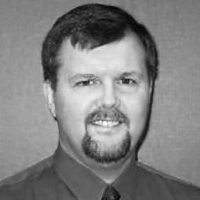Question
Could you please direct me to some information on probe microphone measurements, particularly in cases where the client has TM perforation.Answer
There are a few textbooks where probe microphone measurements are covered in general. The most obvious choice would be Probe Microphone Measurements: Hearing Aid Selection and Assessment by Mueller H, Hawkins D, Northern J; Delmar Learning, 1992. Another text with a lot of information about hearing aid assessment is Hearing Aids by Dillon H; Thieme Medical Publishers, 2001.
However, with respect to probe microphone measurements on people with TM perforations I know of only one published paper:
Real ear unaided responses in ears with tympanic membrane perforations.
Article by Moryl C, Danhauer J, DiBartolomeo J; Journal of the American Academy of Audiology, 1992/Jan.
I can also include my personal experience on the topic from a poster I presented in Canada in 1990 "Real-ear measurements on surgically altered ear canals ". The data is probably still sitting in the garage of the house I was living in at the time, but I can give you some idea of the relevant findings.
Basically, a small perforation has little impact on the results or validity of your measurements when you exercise typical care during the measurement procedure. On the other hand, a very large central perforation will have two consequences. It lowers the resonant frequency of the ear canal because the middle ear space is now included as part of the cavity and it likely alters the transfer function of acoustic energy to the cochlea.
Lowering the resonance of the ear canal is less of an issue as it requires only that you tune the frequency response of your hearing aid to match a lower frequency peak. The reduction of the resonant frequency will be even greater if radical mastoid surgery has been performed. The removal of the extra bone tissue enlarges the cavity further. When mastoid surgery has been performed and the TM has not been repaired the ear canal resonance tends to look like a sharp peak closer to 1500 Hz than the 2800 Hz resonance you usually expect to see. However, the real problem is the absence of the TM and the ossicular chain when a large central perforation is present. In this case I have often found that the acoustic energy measured with the probe microphone does not accurately reflect the frequency/gain characteristic of the amplification that actually reaches the cochlea. I have found this by comparing the probe microphone measurements obtained on people who have had mastoid surgery with their functional gain measurements using linear amplification.
What I have noted is that the sharp low frequency (approx. 1500 Hz) resonance makes it look as if there is adequate gain applied above and below the resonant frequency but no gain at the resonant frequency. Then when I do a function gain measurement of the same hearing aid without adjusting it, I find that there is ample gain at the frequency where the peak occurred. This tells me that I should question the validity of my real-ear measures whenever there is a large central perforation and particularly when the ossicular chain is disrupted. Is it because my probe microphone does not rest close enough to the oval window, where the acoustic pathway finally terminates? Or is it that the transmission pathway is just so different that a probe microphone measurement will never be accurate regardless of the location of the probe tube. I never had the opportunity to answer that question. So I just rely on functional gain measurements in those cases.
Donald Hayes, Ph.D. has been an audiologist for 17 years. He is the Manager for Audiology Research and Training at Unitron Hearing Ltd. In Kitchener, Ontario. He may be reached at don.hayes@unitron.com
Visit the Unitron website for more information

